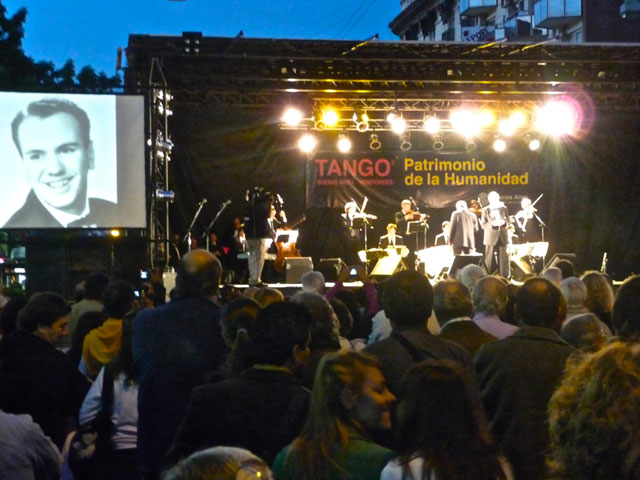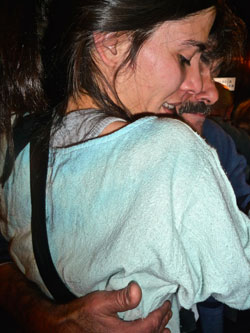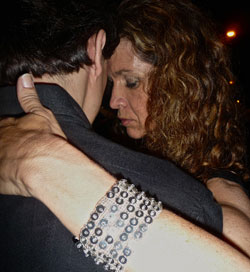
Hundreds march to barrio Boedo where the poetry of the 30s and 40s was brewed (poets and musicians gathered in the barrio’s cafes). A black stage was build from sidewalk to sidewalk across Avenida Boedo. The multitude comes to hear five iconic singers enlisted for the occasion – none under 80 years of age. The standing crowd listened with utmost reverence to Ruben Cané (1927 -), Osvaldo Ribó (1927 -), Julio Martel (1923 -), Juan Carlos Godoy (1922 -) and Alberto Podestá (1924 -). Elegantly dressed in black tie, each gave us three songs. Visuals of the singer’s childhood precede his appearance. Oversized photographs from the 40s and 50s are projected on the stage while each one sings.
Old and young spectators are in awe. The group’s emotion is palpable. The silence is religious. When singing stops, their shouting is unstoppable.
The five men line up to sing the finale: “Vieja Serenata.” Not in unison. Each delivers a few verses and hands the microphone to the next in line. Upon receiving the microphone, each singer picks up where the other left off without hesitation. I hear whispering: “Can you believe they still have these voices?” I am thinking: “Can you believe they still have these memories?”
When the show is over I ran to the stairs to watch them descend. A woman whispers in my ear: “Siento ternura mirandolos” (I feel tenderness watching them).
Only in Buenos Aires tango penetrates the heart and soul of its people in such manner.
Hiroshi y Kyoko Yamao, the winners of the 2009 tango salon competition, dance two tangos. Porteños want an encore. I notice that the inclusive spirit that gave birth to tango still lives on.
The grand outdoor milonga follows the performance.

Tags: Places



